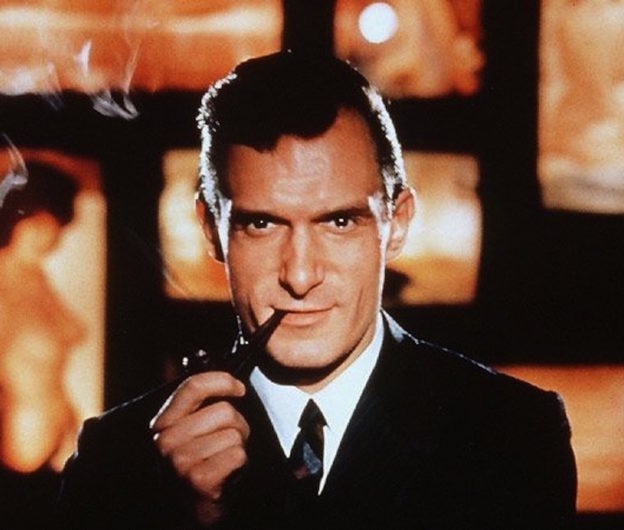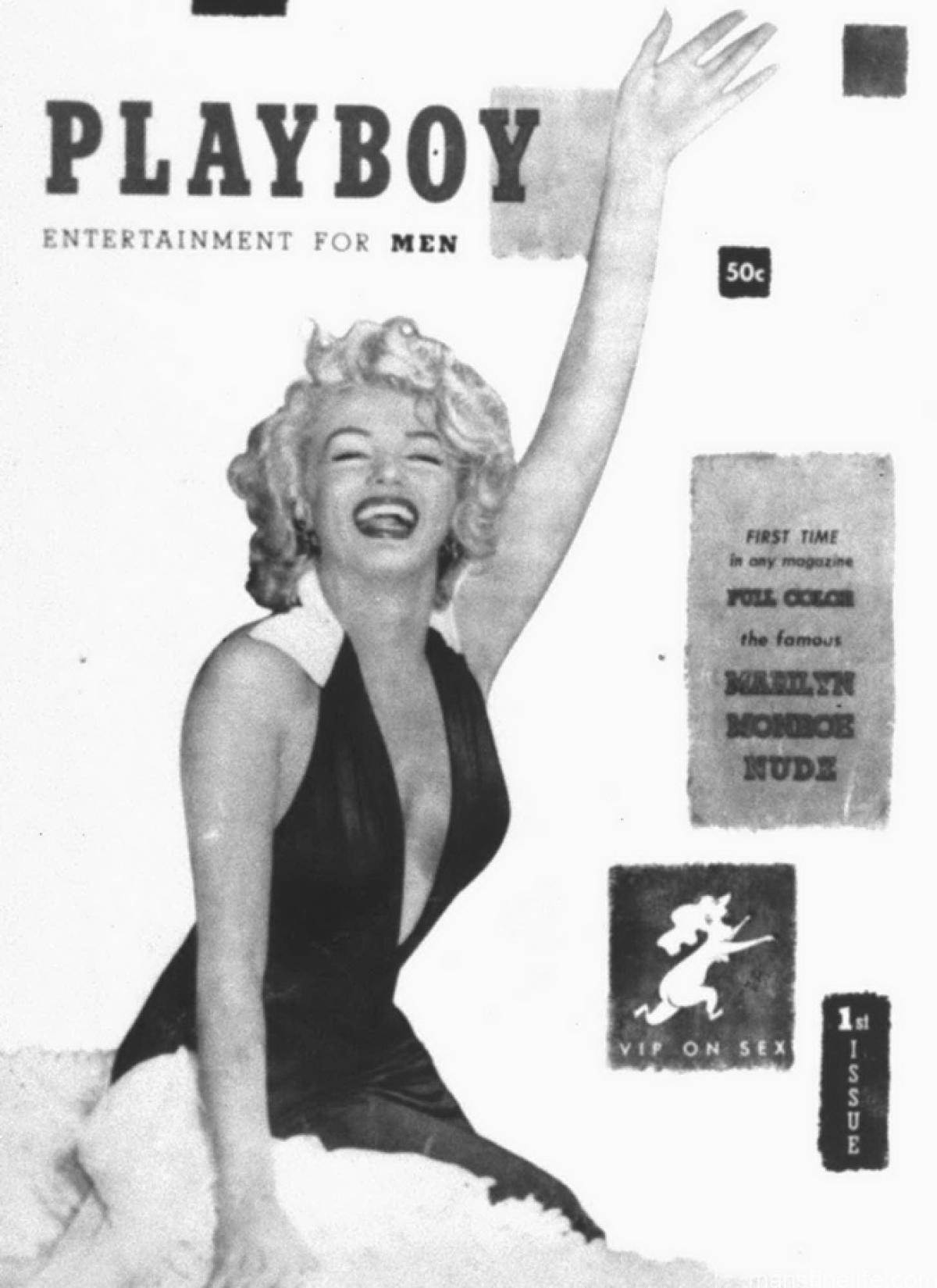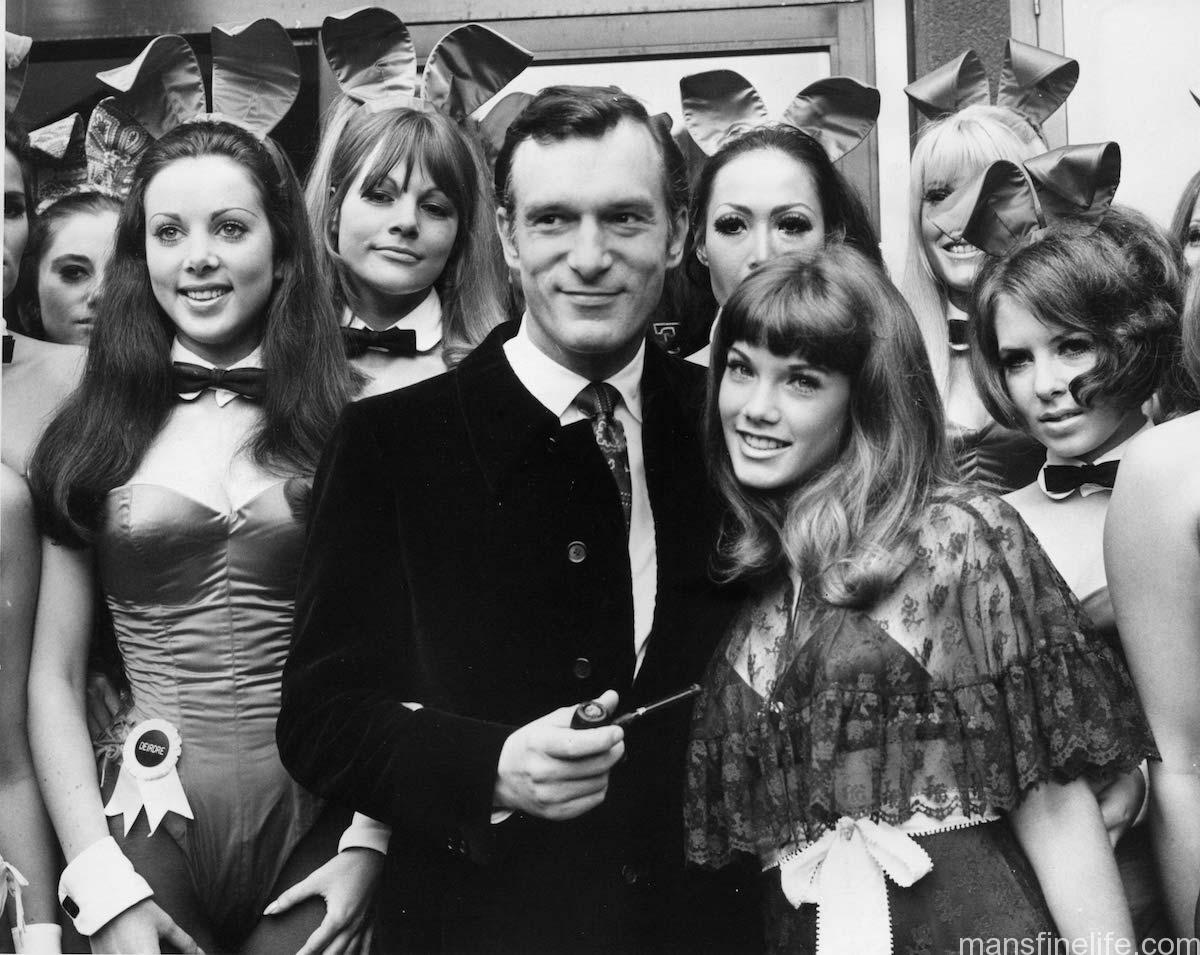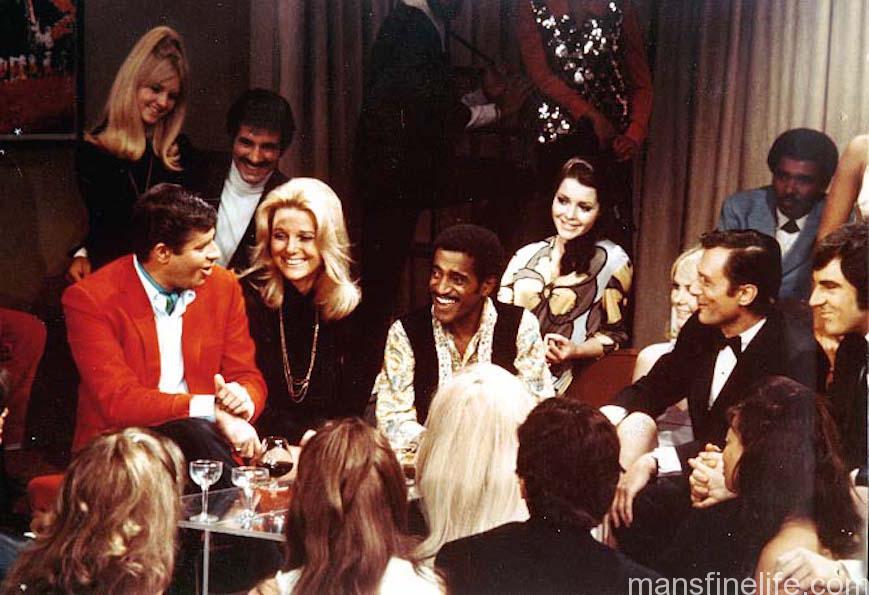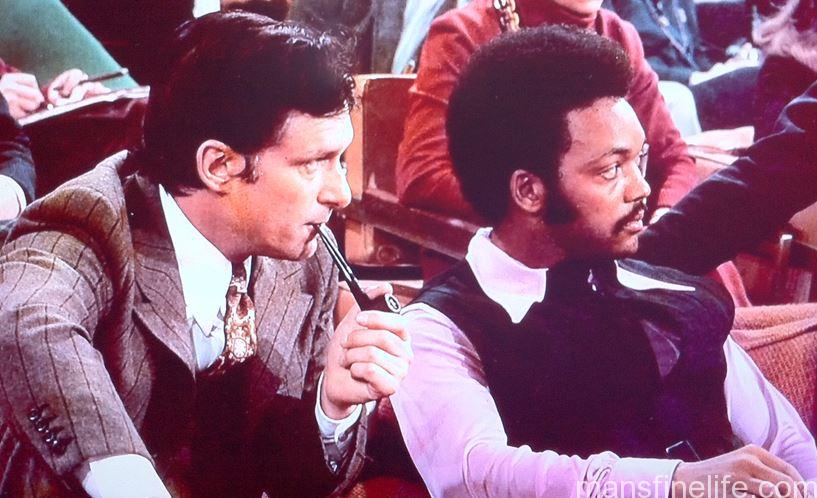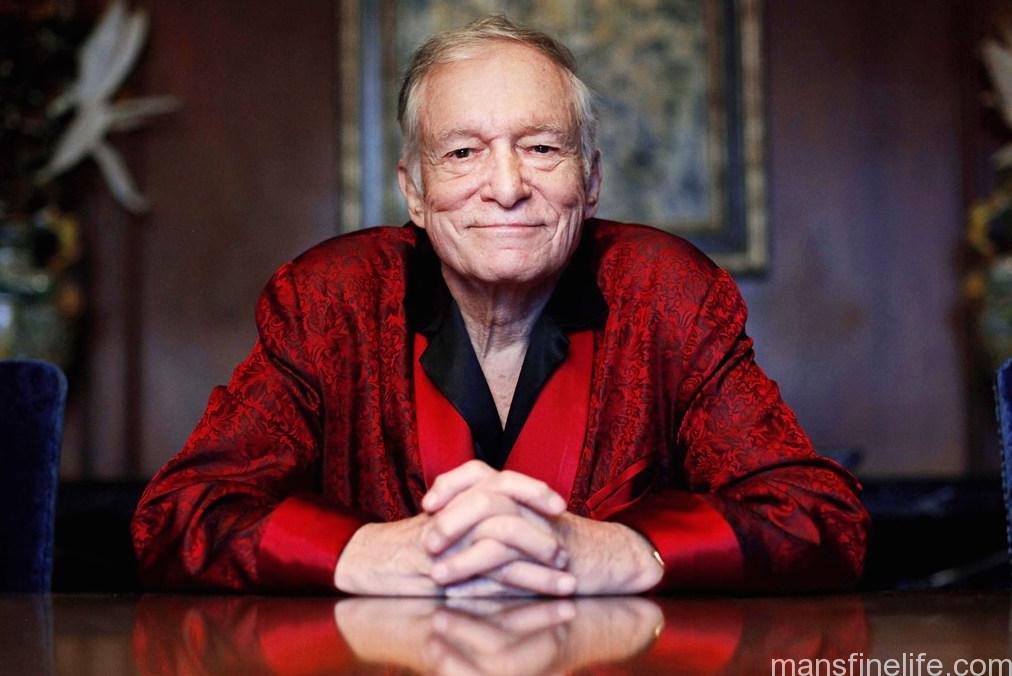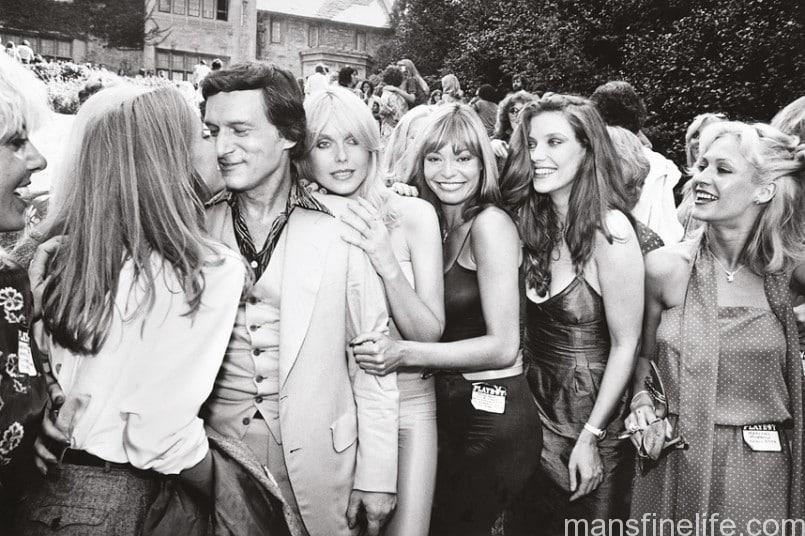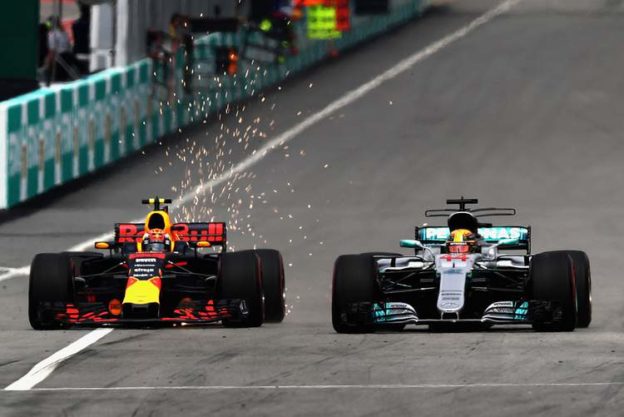When Hugh Hefner, the maverick founder and publisher of Playboy, died last week at the age of 91 it was tempting to say that it marked the end of an era. But in truth that era ended long ago, perhaps as far back as the 1990s and the birth of widespread internet access with all the instant onanistic delights that would bring. It wasn’t hard to see that his death was treated as the passing of a retrograde dinosaur by the gleeful way so many piled on, tamping the dirt down on poor old Hef before the body was cold or the last period was put on his New York Times obituary.
Hef was called a creep, a pervert, an exploiter of women, a pimp, a lonely old loser. Great claims were made about how he had single-handedly degraded the sexual culture of the United States and done us all irreparable harm. That these claims were primarily made by women on the left of the political spectrum, as well as a few pearl clutching conservative men, made me wonder if Hef wasn’t lying bemused there in his special crypt in Westwood Memorial Park — a final resting place that he purchased so he could spend eternity next to his feminine ideal and also the ticket to his success as a publisher, Marilyn Monroe. It almost seemed as if Hefner’s sexual revolution had turned back on itself and become a new puritanism despite — or perhaps because of — the unlimited, undreamed of access to the multifaceted turn-ons of the cyber universe, a time where most if not all sexual imagery is debated as someone being exploited and all nudity, artfully shot or otherwise, is once again shameful “pornography.”
Hefner’s legacy is an understandably complex one. But of course judgements from the distance of 2017 on men who made their fortunes in the mid-20th Century amidst its highly sexist, highly male-dominated society are rarely going to be favorable. That Hefner made his particular fortune on the naked bodies of nubile young women would make him a polarizing figure no matter when he did it. That very first coup of the Monroe nudes that instantly propelled Playboy to a must-buy men’s publication — photos which mortified Marylin but which she also admitted helped her career — illustrated the dichotomy of Playboy in a nutshell, the opportunism and panache, the exploitation and pitch perfect taste. In future all the other models would be willing participants, paid certainly, but also unashamedly showing their naked bodies at the peak of their sexual attraction — young, fit, and airbrushed to perfection. It’s true that Hefner was selling the idea of “sexual liberation” and revolt against puritanism. But of course it’s also true that he saw it exclusively through the male lens of available sexy college coeds and girls next door to perfectly compliment a swinging bachelor’s lifestyle filled with little black books and a pad decorated with Eames and Saarinen furniture with a premium Hi-Fi system playing Miles Davis and John Coltrane on quarter inch reel-to-reel tape.
But then, this was a men’s magazine back when such notions were not yet vigorously contested. The barbershop, the pool hall, the club and especially the board rooms were almost exclusively men-only (and white men only, at that). In publishing a racy magazine for men in the 1950s how much could we really expect Hefner to cater to an equal-opportunity female perspective? He had no interest in that whatsoever and he never really would. But as time passed and Playboy became an American institution like Coca-Cola and Lucky Strikes, Hefner pushed the intellectual boundaries that could be intertwined with such a publication. If sex was undoubtedly still the main selling point he wanted something that was worth discussing after orgasm filling the pages of his life’s mission. So alongside Miss July one could find minor (and sometimes major) works by literary giants like Ian Fleming, Arthur C. Clarke, Roald Dahl, Ursula K. LeGuin, Jack Kerouac, Ray Bradbury, Alex Haley, Vladimir Nabokov, Gabriel Garcia Marquez and even feminist icon Margaret Atwood, among many others. And Hef put his considerable fortune not only into his famously cheesy Playboy clubs with its parade of tightly corseted, cotton-taled Bunnies (blisteringly exposed by a young, undercover Gloria Steinem in “A Bunny’s Tale”) but also groundbreaking television shows, Playboy’s Penthouse and Playboy After Dark, which featured swinging, fantastically hep soirees with entertainment by the leading black, white and Latino performers of their time, a quietly revolutionary fully-integrated scene in the 1960s.
He was also a staunch advocate for free speech, civil rights and a woman’s right to choose (though obviously feminists will say that last one was completely self-serving, as do, ironically, staunch conservatives). The Playboy Interview series had some of the better in-depth conversations with stars of sport, politics, technology, music and film. The interview conducted with Jimmy Carter while he was running for president where he admitted that he “lusted in his heart” is probably one of the most famous ever given by an American politician, while future Roots author Alex Haley’s chilling interview with American Nazi leader George Lincoln Rockwell in 1966 was another of many important groundbreakers that put a spotlight in American race relations, a long-time Hefner concern.
So yes, it’s a complicated legacy. Like a lot of the greats he peaked after an extraordinarily fertile period and then rode his fame and stereotype to ever-diminishing returns. If he somehow opened the door to the pornographic free-for-all that some perceive around us now it’s also true that he never capitulated to hardcore and gynecological close-ups like his main competitors, Bob Guccione’s Penthouse and Larry Flint’s execrable Hustler (Flynt may be a fee speech hero to some but his magazine is absolute garbage). Although Hef did try to have his cake and eat it with the quiet purchase and publication of the more explicit Oui magazine, over at Playboy even pubic hair was a long time coming. As swinging and revolutionary as it had been in the 50s and 60s, by the late 1970s amidst the tumult of the real sexual revolution that it had arguably uncorked, Playboy was actually reactionary in its “wholesome” approach to the female nude. And by the time of the internet explosion Playboy was more of an American fixture like a Chevrolet or a ranch house than any kind of avant grade trendsetter or integral part of a happening zeitgeist. It’s what respectable people read when they wanted a little titillation and perhaps an interesting article or interview. Sure it was cringe-worthy to see Hef still walking around in pajamas and squiring a rotating harem of identical perfectly proportioned blondes in their 20s preaching the gospel of Viagra. But that was the image Hef had created for himself and he was unable or unwilling to slough it off despite his advancing years. What did we really expect this ultimate adolescent-cum-swinging bachelor to do after all these years, stop living his fantastical dream, settle down and grow up? From a marketing perspective, if Hef and Playboy were essentially the same entity how could this aging Don Juan possibly change himself as the embodiment of the Playboy lifestyle that he so enthusiastically promoted?
In some of the fierce critiques that have emerged in the short time since Hugh Hefner’s passing there has been an effort to tarnish him with the tragic death of Dorothy Stratton in 1980, as if her introduction to and promotion to stardom by Playboy had been responsible for her murder rather than her scheming, scummy, murderous husband. I would only answer that with a question: how many murders have occurred among employees of other “respectable” businesses during all the years Playboy has been published? A hell of a lot more than one, that’s for sure. There is also a concentrated effort to portray Hefner as the ultimate exploiter of women, somehow luring them to bare their flesh for his personal profit and satisfaction. This seems to me to be one of the more ironically antifeminist positions, as if the countless models and centerfolds of Playboy did not have any choice in the matter. True, they did not make the money that Hefner made off of their labors. But what employee makes the same money as the CEO? Many former playmates wound up working for the company and many were happy with their nude photo shoots. I’m sure some were dismayed in retrospect but again, in what employment transaction is satisfaction 100% guaranteed? The idea that these literally thousands of women were exploited against their will seems like utter nonsense. It’s much less condescending to think that they knew what they were doing and perhaps had a plan for what they would do with money they were being paid to better their lives. It’s a distinct possibility that many of the models actually enjoyed the prospect of being desired by millions of men and perhaps look back now when they are older at their youthful images with pride. If that’s a sick proposition to some it may be time to re-examine just where exactly the border lies between exploitation and willing sexual participation, of human desire and fantasy, of lust and admiration, of voyeurism and necessary physical gratification. And to the critique that Playboy presented an unrealistic vision of perfect women that warped the boys and men exposed to it I’d just say this: look at the millions of boys and men who read Playboy at some point in their lives. As one of them I can tell you the boys were certainly ecstatic to finally find out what grown-up women looked like under their clothes and what to look forward to when they grew up to be men. And the vast majority of men understood the idealized nature of the images and simply settled down to perfectly normal marriages and relationships undamaged by such visions of All-American Aphrodites no matter how much they may have enjoyed them and, like President Carter, lusted in their hearts.
Hef’s last laugh on us all may just be how far we’ve regressed as a society where to be successful at what Hugh Hefner and Playboy did 50-60 years ago involves exponentially more debasement and exponentially less aesthetic and intellectual veneer, where pundits knowingly reference PornHub but turn around and excoriate Hefner and Playboy. You can lay the blame at Hefner’s feet for the fact that there’s a strip club in every town and endless porn available on the internet if you like. But better to look at our own human needs and weaknesses to find the real answer to the question of just why that is so. If men didn’t want it and women weren’t willing to participate in it Hugh Hefner and Playboy would’t have been the massive success that they were. He sold an openly sexual dream world at a time when Americans were desperate for it and people bought it in spades for decades afterwards. So tell me how exactly did he corrupt such willing consumers? You can shoot the messenger if you’re uncomfortable with that. But I’m afraid he and his silk pajamas have just left the Mansion.



